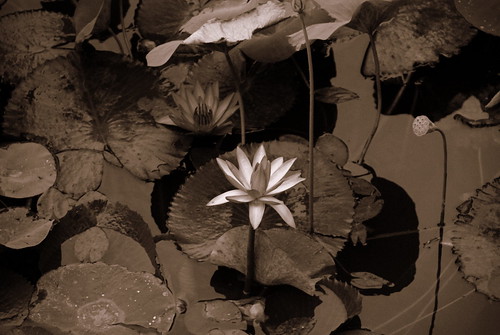Get a life...
When I saw the book, 'Get a Life' at a bookstore, the name itself admonished me, whether to buy a copy, because the title sounded like one of the regular self help books. But then when my eyes read the author as Nadine Gordimer, I thought let me give it a try. This was my first read of any work by Nadine Gordimer. I liked the book because contemporary issues formed the framework of the plot, the author modishly jogged towards a wavering climax. No answers are provided and I felt the author has been seeking different interpretations to the various webs we encounter in our lives. In short a provocative book throwing questions at each layer.
 The central character, Paul is the child of well-to-do white South Africans, who is forced into a temporary state of in-action and isolation as he is diagnosed of suffering from thyroid cancer. The medical treatment that he undergoes leaves him radioactive, thus being a source of danger to others for some weeks. Sensing the harmful effects of the radioactive radiations, he leaves his wife and only child to return to his childhood family home. His parents, both of whom are nearing retirement, along with a care taker are more than happy to care for their child who is now a 35 year old man. Even though 35, so what. For any parents, their child is always a child, and age is just a number.
The central character, Paul is the child of well-to-do white South Africans, who is forced into a temporary state of in-action and isolation as he is diagnosed of suffering from thyroid cancer. The medical treatment that he undergoes leaves him radioactive, thus being a source of danger to others for some weeks. Sensing the harmful effects of the radioactive radiations, he leaves his wife and only child to return to his childhood family home. His parents, both of whom are nearing retirement, along with a care taker are more than happy to care for their child who is now a 35 year old man. Even though 35, so what. For any parents, their child is always a child, and age is just a number.This is a novel of inner lives, described emotions not conveyed ones, about human relationships, etc. It's an intricate matrix in which each of the characters is interacting with one's own self.
Paul, an ecologist is fighting for environmental concerns to save the world on one side. On the other side of the fence is Berenice, his wife who works in an advertising agency that facilitates few business firms’ colossal plans for development in the form of constructing highways and resorts, destroying her husband’s beloved wilderness. At a personal level, they share a perfect relationship, make love, have a kid, go out for dinners, and manage the responsibilities at home well but there is contradiction between the values of their work.
How do they manage this?
Paul's mother, Lyndsay, is also a successful professional in the field of law and justice. As a mother, she leaves no stone un-turned when it comes to taking care of her son who has acquired the status of a leper. As the plot develops, she unfolds her past of her heydays, about 15 years ago. A time when she had a four-year affair with a fellow lawyer out of mere desire for gratification. A gross mistake, a lie, and the irreparable damage, are today dark patches of the past for Lyndsay. But some clouds are heavy and don’t get carried away whatsoever. The end result, guilt suffocates Lyndsay.
As the story gains momentum, there is an air of positivity. Paul recovers fast from the radioactive treatment and by the time he is fully cured, both families have changed. Later his parents go to Mexico to fulfill the archaeological vocation Adrian, Paul's dad had sacrificed to support his family. The outcome of this trip is the final surprise in this highly unusual exploration of passionate individual existences.
I found that Gordimer's style is to use less but powerful words. But few sentences were too elliptical and brumous for me to comprehend. Either that's the author bizarre way of writing or my pea sized head didn’t get those Einsteinish format of sentence construction.
Parents are responsible for bringing into the world their progeniture whether deliberately or carelessly and theirs is an unwritten covenant that the life of the child, and by descent the child's child, is to be valued above that of the original progenitors.But then there are pages, where one would think twice why the author wrote it as fluid prose, though it tastes as good as poetry.
'Where the company of jacaranda fronds finger the same breeze that brushed the boy's soft cheek'.A slim volume, but the author's literary epithelial ducts convey many things which people won’t like to hear or things people like to share but somehow keep those suppressed.
Hey 'Get a Life'. Nah nah am not giving gyan, here just saying, read the book if that strikes your interest.
Keep reading and remain connected.
Labels: blogs, books, emotions, human-relations, relations






